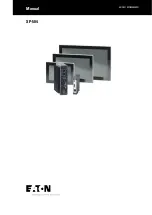
Safety | 2
DURO-A RC
11 / 48
2.3
Obligations of the Owner
Before all work on and with the power chuck, the operator is to ensure:
▪ that the operating manual is available to the responsible personnel;
▪ that the responsible personnel are sufficiently qualified for their work;
◦ This applies in particular to assembly, maintenance and repair.
▪ that the responsible personnel have read and understood the operating
manual.
◦ RÖHM GmbH recommends that this be documented in a suitable form.
▪ that all safety equipment is correctly mounted and operational;
◦ Safety equipment must never be by-passed, manipulated or shut down.
▪ that the power chuck is in perfect working order;
▪ that all damaged and defective parts are replaced immediately.
The machine manufacturer or the operator has to ensure with suitable meas-
ures that the specified technical data of the power chuck cannot be exceeded
The machine manufacturer or the operator must ensure that the power chuck
can only be operated when the separating safety guard is closed. Exception:
Set-up mode.
In set-up mode:
▪ it must be ensured that no machining can be carried out;
▪ the operating pressure must be reduced to the lowest possible value;
▪ the machine spindle speed must be considerably reduced.
To prevent the tension being released when the tool or machine spindle is ro-
tated, the machine control must be programmed accordingly.
Before initial machining is carried out, the operator must check (e.g. by calcu-
lation) whether the generated clamping force under speed is sufficient with
the existing friction to safely hold the workpiece with the available machining
forces. This also applies to processing access with blunt or broken tools.
The power chuck does not have its own guard and the clamping system is not
self-locking in a mechanically secure way. Therefore, the power chuck may
only be operated via a control which has a safety device. This safety device
must prevent the clamped workpiece / tool from being able to leave the clamp
even if the clamping energy (e.g. electricity, hydraulic system, pneumatic sys-
tem etc.) and under the influence of external forces (e.g. machining force,
centrifugal force).
In the event of a sudden drop or failure of the actuation energy, machining
must be interrupted immediately and the tool or machine spindle stopped im-
mediately.












































